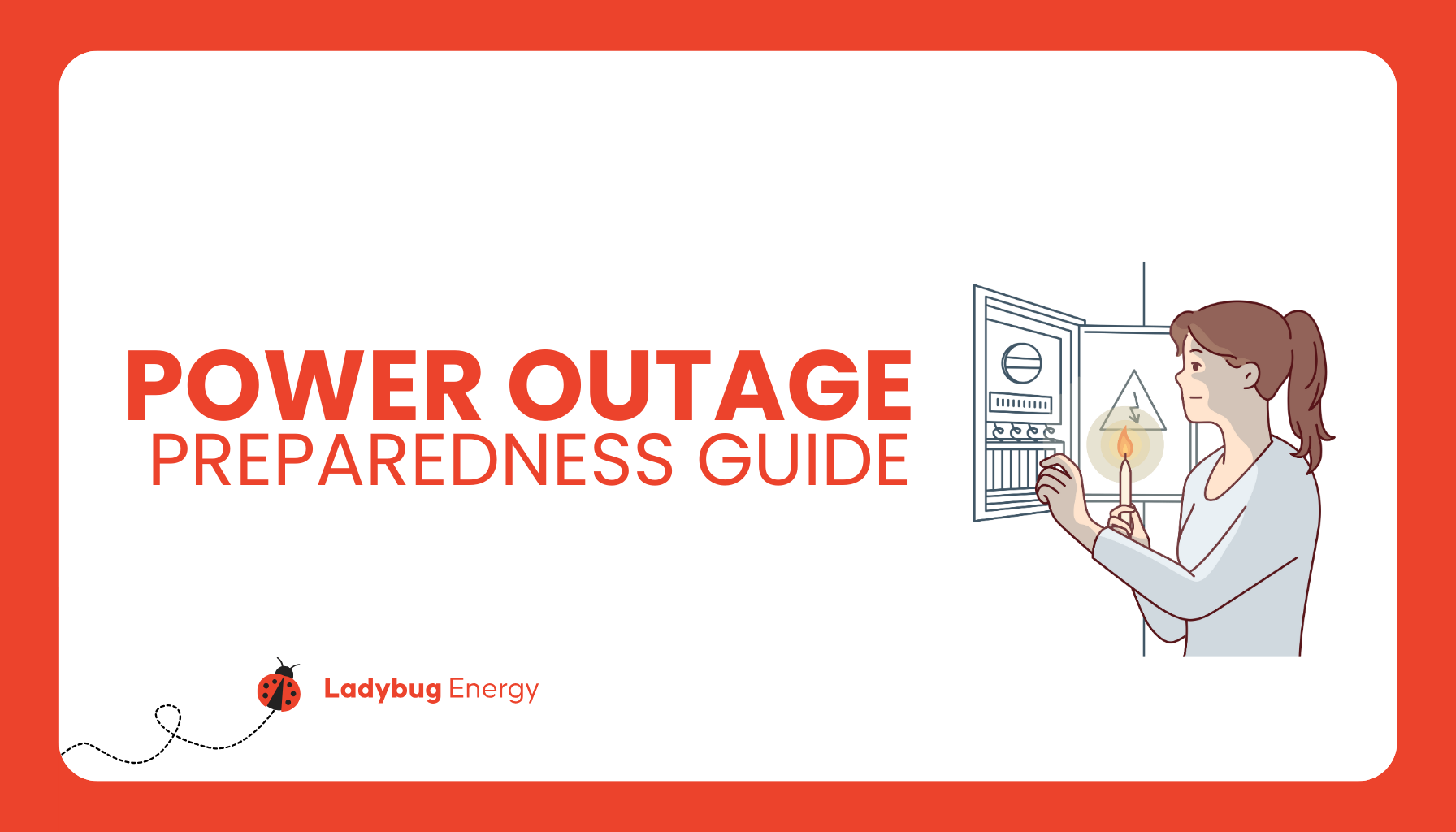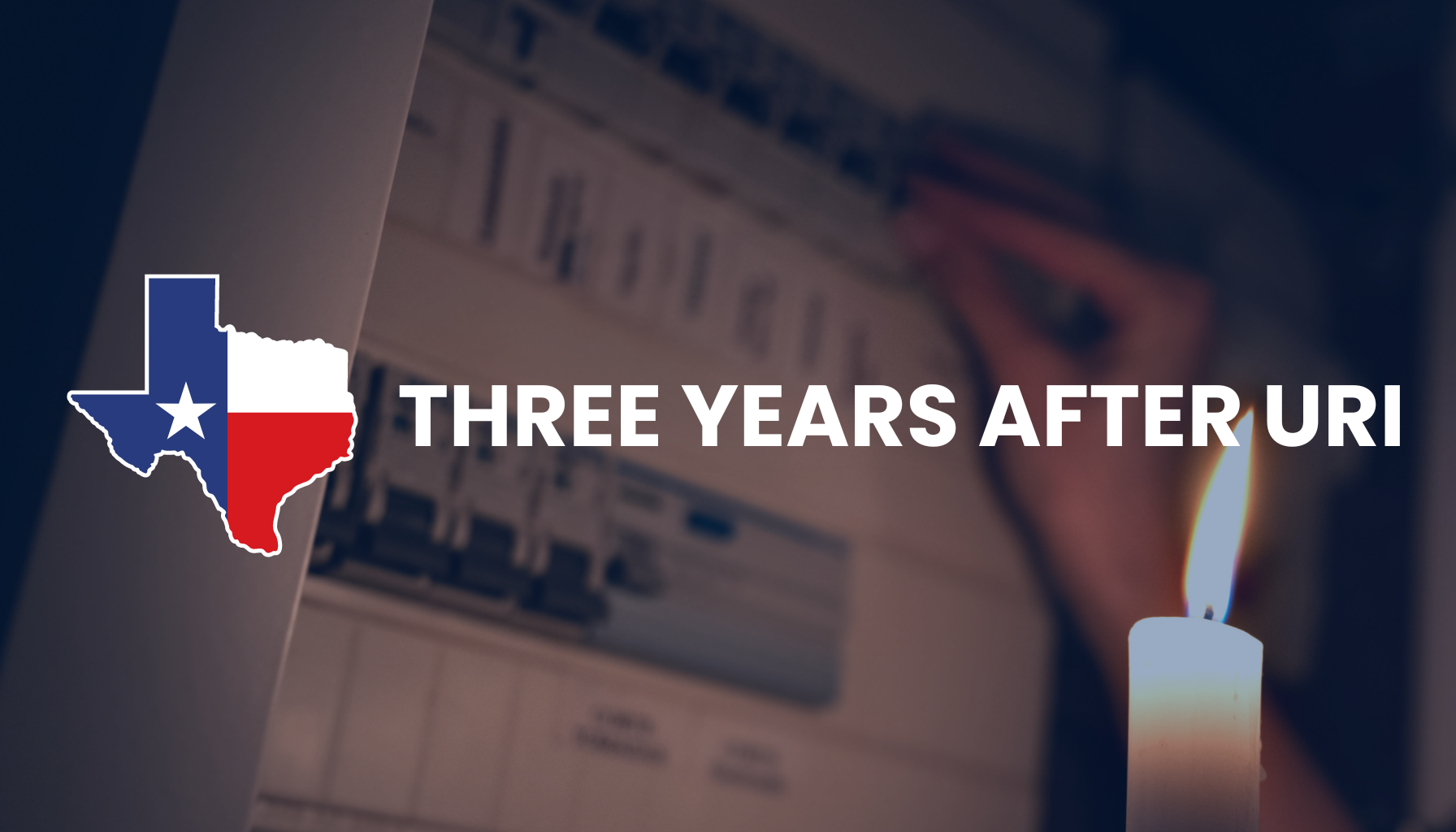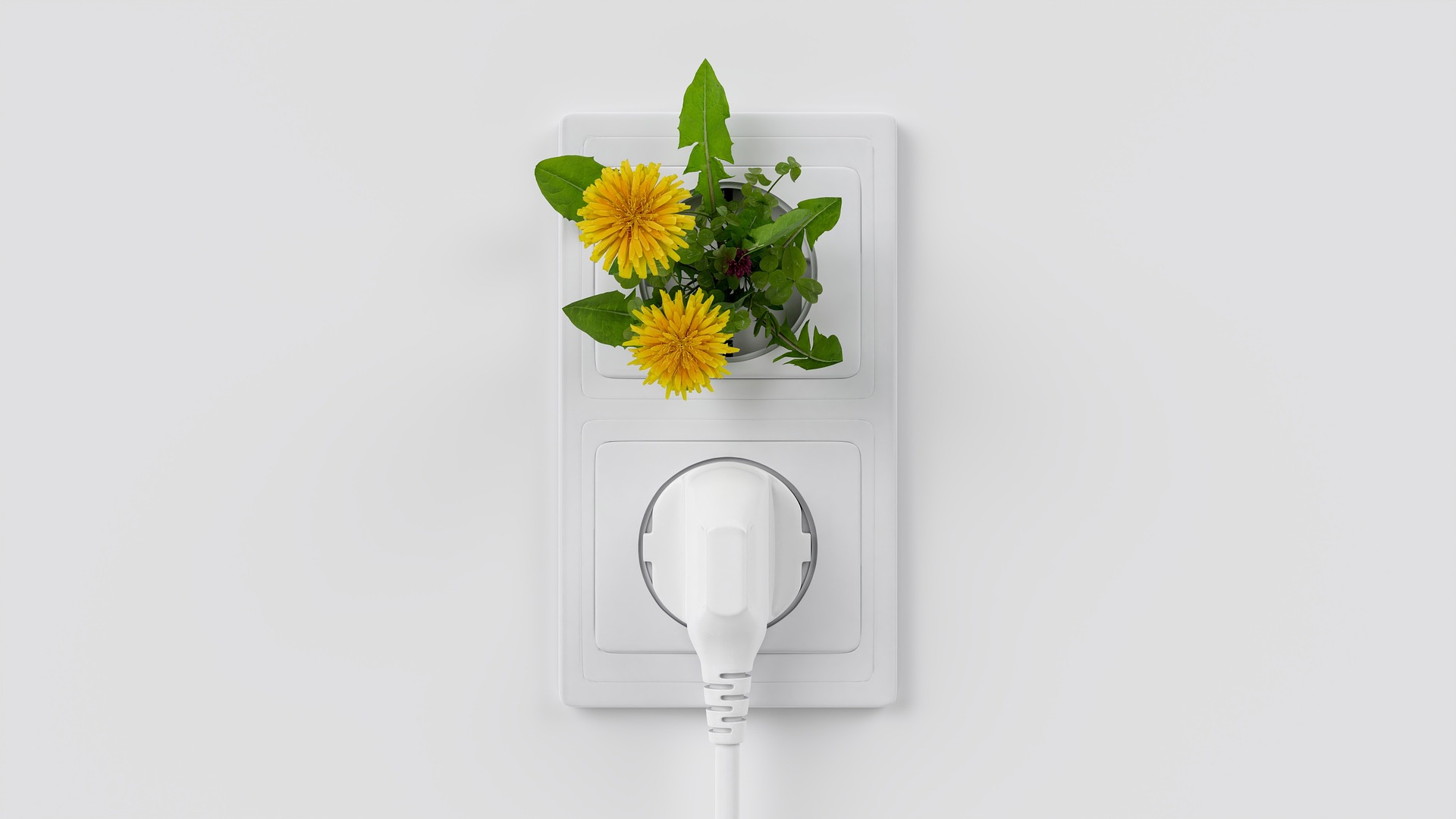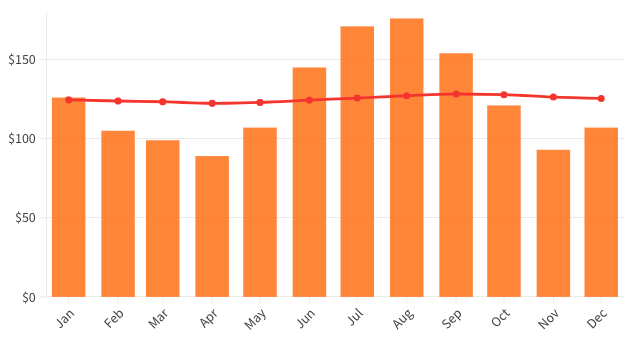
Hurricane Season in Texas: How to Prepare for Power Outages
Texas is no stranger to powerful storms, especially along its expansive Gulf Coast. Each year, hurricane season officially runs from June 1 to November 30, bringing with it the potential for devastating winds, heavy rainfall, and widespread power outages. Preparing early isn’t just a good idea — it’s a necessity.
According to the National Oceanic and Atmospheric Administration (NOAA), the 2025 Atlantic hurricane season is forecast to be "above normal," with an expected 17–25 named storms, including up to 7 major hurricanes. Contributing factors include warmer-than-average ocean temperatures in the Atlantic and a developing La Niña pattern, both of which can fuel storm formation. You can view the NOAA's full seasonal outlook here.
Historically, hurricanes like Harvey (2017), Ike (2008), and even more recent storms have left parts of Texas without power for days or even weeks. These outages can be not just inconvenient but dangerous, especially in extreme heat or for those with medical needs.
That’s why staying ahead of the season with a power outage plan is essential. Whether you live in Houston, Corpus Christi, Beaumont, or anywhere else within striking distance of a tropical storm, this guide will walk you through key steps to protect your home and loved ones — including creating an emergency kit, exploring backup power solutions, and knowing what to do when the lights go out.
Understanding How Power Grids Respond to Storms
When hurricanes sweep through Texas, one of the first public services to be impacted is the electrical grid. Even a Category 1 storm can knock out power to thousands of homes in minutes — often due to high winds, falling trees, or flooding that damage above-ground power lines and substations.
Texas operates on a largely independent grid managed by ERCOT (Electric Reliability Council of Texas), but the actual maintenance and repairs fall to local Transmission and Distribution Utilities (TDUs). These utilities handle the physical infrastructure that delivers electricity to your home — not the provider you choose your plan with.
When severe weather is expected, utilities may pre-stage crews to restore power as quickly as conditions allow. However, once a storm hits, restoration can take time, especially if roads are flooded or infrastructure is severely damaged. Utilities must prioritize critical infrastructure like hospitals and water treatment plants before residential areas.
That’s why having a backup plan is crucial. Whether it’s a generator, solar battery system, or just a well-prepared emergency kit, understanding how outages unfold helps you stay a step ahead.
Must-Have Emergency Kit for Power Outages
Building an emergency kit isn't just for worst-case scenarios — it's about making sure you're ready for any length of outage, from a few hours to several days. Your kit should be easy to access, portable, and stocked with essentials that meet your household’s unique needs.
Here are the core items every Texan should have in a hurricane-season emergency kit:
- Drinking water: At least one gallon per person, per day (3-day minimum)
- Non-perishable food: Canned goods, protein bars, dried fruit, and baby food if applicable
- Manual can opener
- Battery-powered or hand-crank radio: Preferably one that receives NOAA weather alerts
- Flashlights and extra batteries: Opt for LED for longer life and brighter output
- Portable chargers and power banks: Keep phones and devices functional during outages
- Basic first aid kit: Include bandages, antiseptics, pain relievers, and any prescription medications
- Hygiene supplies: Hand sanitizer, moist towelettes, feminine products, and trash bags
- Copies of important documents: ID, insurance info, and medical records, stored in a waterproof pouch
- Cash: In small bills, since ATMs and card readers may be offline
- Face masks and gloves: For post-storm cleanup or shelter situations
For families with kids, pets, or seniors, don’t forget to add comfort items like games, snacks, and necessary medications or pet food.
You can also consider smart upgrades that provide long-term utility:
- A solar-powered lantern
- A USB-rechargeable fan
- A battery-operated CO detector if you plan to use a generator
These items aren’t just about survival — they’re about staying safe, comfortable, and informed during a potentially stressful situation.
Backup Power Solutions for Texas Homes
Power outages during hurricanes aren’t just inconvenient — they can quickly become hazardous, especially during heat waves or for those relying on medical devices. Having a reliable backup power source means you can maintain comfort, safety, and even work-from-home capabilities when the grid goes down.
Here are the most common backup solutions for Texas homeowners and renters:
1. Portable Generators
These gasoline or propane-powered units are popular because they’re widely available and relatively affordable.
- Pros: Can power essentials like refrigerators, fans, and phone chargers.
- Cons: Must be used outdoors due to carbon monoxide risk. Require regular maintenance and fuel storage.
- Tip: Never run a generator indoors or in a garage — always place it at least 20 feet from windows and doors.
2. Standby (Whole-Home) Generators
These are permanently installed systems connected to your home's electrical panel and fueled by natural gas or propane.
- Pros: Automatically kicks in when the power goes out. Can power the entire house.
- Cons: Higher cost ($5,000+), requires professional installation and permitting.
- Best for: Homes with high energy needs, or households with critical electrical equipment like CPAP machines.
3. Solar Power with Battery Storage
With the rise in Texas solar adoption, many households are installing solar panels paired with battery systems like Tesla Powerwall or Enphase.
- Pros: Renewable and silent. Can operate independently from the grid during outages.
- Cons: High upfront cost, may not provide full coverage depending on your energy consumption.
- Best for: Eco-conscious homeowners looking for long-term energy resilience.
4. Battery Backup Units (Portable Power Stations)
These compact systems are essentially large rechargeable batteries that can power phones, laptops, small appliances, and even CPAP machines.
- Pros: Quiet, clean, and indoor-safe. No fumes or fuel needed.
- Cons: Limited runtime. Not suited for powering large appliances.
- Great for: Apartments, renters, and those seeking an indoor-safe backup.
When choosing a solution, think about what you really need to keep running during an outage: A few lights and your fridge? Or central AC and internet for work? Matching your backup system to your lifestyle ensures you're spending smart.
Prepping Your Home Electrical System
Securing your home's electrical system before a storm is just as important as stocking up on supplies. With a few practical steps, you can reduce the risk of damage to your appliances, improve safety during outages, and help speed up recovery once the power is restored.
Here’s how to prepare:
Install Surge Protection
A strong hurricane can lead to sudden power fluctuations and electrical surges — especially when the power returns. To protect sensitive electronics like TVs, computers, and smart appliances:
- Use high-quality surge protector strips
- Consider installing a whole-home surge protector at your main breaker panel (requires an electrician)
Label Your Circuit Breaker
Make sure your breaker box is clearly labeled, so you can quickly turn off circuits in an emergency. If you need to leave your home or hear sparking or smell burning, you’ll want to know exactly which switch controls which part of your home.
Know How to Shut Off Power
If floodwaters enter your home or a major electrical issue arises, shutting off the main breaker may be necessary. Learn where your main service disconnect is and how to use it safely. If you're unsure, ask a licensed electrician ahead of time.
Unplug Major Appliances
Before a storm makes landfall:
- Unplug devices like microwaves, TVs, and gaming consoles
- Leave one lamp plugged in to signal when the power returns
This helps avoid damage from power surges and reduces fire risk.
Secure Outdoor Electrical Elements
Tie down or bring inside outdoor lights, extension cords, and power tools. Also inspect your electrical meter and service line — if it looks loose or corroded, notify your utility before the storm.
Smart Tip: Use GFCI Outlets
In moisture-prone areas like kitchens, garages, or outdoors, Ground Fault Circuit Interrupter (GFCI) outlets can protect against electrocution and short circuits. These are often required by code and are a worthwhile upgrade.
By taking these steps early, you help ensure your home’s electrical system stays protected — minimizing the risk to both property and people.
Communication Is Key: Staying Connected During a Blackout
When the power goes out during a hurricane, staying informed and connected can make all the difference. Whether you're coordinating with loved ones, checking emergency updates, or contacting your electricity provider, reliable communication is essential — even when the grid is down.
Here’s how to maintain your communication lifelines:
1. Charge Ahead of Time
- Fully charge all phones, tablets, and laptops before the storm hits.
- Use external battery packs or power banks (charged in advance) to get extra hours of connectivity.
- If you have a vehicle, a car charger can be a last-resort option.
2. Invest in a Battery-Operated or Hand-Crank Radio
A NOAA weather radio gives you direct access to government alerts — even when cell networks are overloaded or offline.
- Look for models with multiple power sources (battery, solar, hand crank).
- Tune into local emergency frequencies or public broadcasting channels for real-time updates.
3. Enable Emergency Alerts on Your Phone
Make sure Wireless Emergency Alerts (WEA) are activated on your device. These government-issued notifications are free and include:
- Severe weather warnings
- Evacuation notices
- Boil water advisories
4. Have a Communication Plan
Plan ahead with your household and close contacts:
- Designate a primary out-of-town contact who can coordinate with others
- Use text messaging or data-based apps (like WhatsApp or Signal), which often work better than phone calls during network congestion
- Keep printed copies of emergency contacts in your kit — phones can fail
5. Use Social Media Wisely
Local emergency management agencies, school districts, and utilities frequently post updates on platforms like Twitter/X and Facebook. Just remember: verify information from official sources to avoid misinformation.
6. Know How to Report an Outage
During an outage, report it directly to your utility provider, not your electricity supplier. We've included direct links to utility outage maps and contact info to help you act fast when the lights go out.
In the next section, we’ll walk through what to do during an actual power outage — from protecting your food to managing your devices smartly until power is restored.
What To Do During an Outage
When the power goes out, especially during a hurricane, it’s important to take immediate steps to ensure safety, conserve resources, and stay informed. A calm, proactive response can make a huge difference — particularly if the outage stretches from hours into days.
Here’s what to do when the lights go out:
1. Report the Outage Promptly
Contact your local Transmission and Distribution Utility (TDU) to report the outage. Most Texas TDUs have online reporting tools and interactive outage maps:
- Oncor Outage Map
- CenterPoint Outage Map
- AEP Texas North
You can also notify your electricity provider, especially if you suspect an issue with your account. A full list of provider contact info is available on our providers page.
2. Conserve Your Battery Power
- Use low-power mode on phones and tablets
- Dim your screen and close background apps
- Turn devices off when not in use
- Ration usage to essential communications and news updates
3. Keep Fridge and Freezer Closed
The less you open them, the longer they’ll stay cold:
- A full freezer can keep food frozen for ~48 hours
- A refrigerator will keep food safe for up to 4 hours if unopened
Use a cooler with ice packs for items you need to access frequently.
4. Unplug Sensitive Electronics
Even after the power goes out, voltage spikes can occur when it’s restored. Protect your devices by unplugging TVs, computers, routers, and appliances.
5. Use Flashlights — Not Candles
Avoid open flames inside your home to reduce fire risk. Opt for LED flashlights or lanterns, and keep extras ready with fresh batteries.
6. Stay Informed
- Use a battery-powered or hand-crank radio to monitor weather conditions
- Follow updates from local emergency services on social media or apps
- Be alert for boil water notices or shelter instructions
7. Stay Cool — or Warm
In extreme heat, move to the lowest level of your home, drink water regularly, and wear light clothing. In colder months, dress in layers and close off unused rooms to retain heat.
Pro Tip: Consider setting up a "command center" in your home — one space where everyone gathers with light, supplies, and communication tools to reduce energy usage and improve comfort.
Post-Storm Safety and Recovery
Once the storm has passed and the skies begin to clear, it might feel like the danger is over — but in many cases, the risks are just shifting. Returning to your routine safely requires careful inspection, patience, and a watchful eye for electrical hazards.
Here’s what to do once the worst is over:
1. Check for Downed Power Lines
Never approach or touch any downed wires. They could still be energized and extremely dangerous. Even if the line appears inactive, stay at least 35 feet away and report it immediately to your local utility.
2. Inspect for Electrical Damage
Before flipping circuit breakers or plugging devices back in:
- Look for water damage near outlets, breaker panels, or exposed wiring
- If you see signs of flooding near electrical components, do not turn the power back on
- Contact a licensed electrician to inspect your home before re-energizing the system
3. Reset and Reconnect Carefully
Once it's safe:
- Plug in your appliances one at a time
- Check devices for signs of damage before use
- Reset GFCI outlets if they’ve tripped
4. Document Damage for Insurance
Take photos of any property damage — including electrical systems, appliances, or spoiled food due to prolonged outages. This documentation can support insurance claims or FEMA assistance applications.
5. Continue to Monitor Alerts
Some risks may remain days after the storm, such as:
- Boil water notices
- Flash flood warnings
- Utility updates regarding power restoration
You can find official updates through local emergency management agencies and via the NOAA Hurricane Center.
6. Be Cautious With Generators
If you were using a portable generator:
- Let it cool completely before storing
- Drain excess fuel if needed
- Store it in a ventilated, secure area away from the home
Storm recovery is about more than cleanup — it’s about making your home safe again, both structurally and electrically. And with each storm season, you'll be better prepared to respond, recover, and power forward.
Resources and Links
Being prepared means knowing where to turn for accurate, up-to-date information — especially when time is critical. Below is a curated list of reputable resources that can help you stay informed and take action before, during, and after a hurricane.
⚡ Power Outage & Utility Resources
- Find Your Texas Utility & Outage Info — Use our utility page to access outage maps and reporting tools for CenterPoint, Oncor, AEP Texas, and more.
- Ladybug Energy Electricity Providers — Compare plans and providers available in your area.
- Electricity Plan Finder — Enter your zip code to explore energy plans that match your needs.
🌪 Hurricane Forecasts and Safety Updates
- NOAA National Hurricane Center — Official storm forecasts, tracking maps, and hurricane preparedness guides.
- FEMA Ready.gov - Hurricanes — Comprehensive planning resources for families and businesses.
- Texas Division of Emergency Management — State-specific alerts and disaster assistance programs.
🔌 Electrical and Generator Safety
- Electrical Safety Foundation: Generator Safety Tips — Best practices for safe generator use during outages.
Having these links saved — or printed — in advance ensures that you’re never scrambling when you need support most.
Hurricane season in Texas is a reality we can’t control — but how we prepare for it is entirely in our hands. From building a thoughtful emergency kit and securing a backup power solution, to understanding your utility’s role and keeping vital communication channels open, each step you take helps protect your home, your family, and your peace of mind.
Remember: preparation isn’t about panic — it’s about planning ahead with confidence. With the right tools, knowledge, and resources, you can face storm season head-on, knowing you're ready for whatever nature throws your way.
And if you're thinking about upgrading your energy plan or exploring options that include backup support, we're here to help. Enter your zip code on our electricity plan search tool to see reliable, affordable choices available in your area — because peace of mind starts with power you can count on.

July 4, 2025
Energy Independence Starts at Home: 4 Ways to Declare Your Personal Freedom from High Bills This Fourth of July

June 20, 2025
How Smart Home Security Systems Affect Your Energy Usage

June 13, 2025
The Smart Texan’s Guide to Beating the Heat: Budget-Friendly Home Upgrades

May 29, 2025
No AC? No Problem: How to Stay Cool During a Heatwave Without Air Conditioning

May 27, 2025
Battery Storage at Home: Are They Worth It?

May 23, 2025
Record May Heat in Texas 2025: What It Means for Your Summer Energy Bills

May 20, 2025
The Rising Popularity of EVs: What It Means for Your Electric Bill

May 16, 2025
Beat the Texas Heat: Summer AC Hacks That Save Money

April 17, 2025
The Truth About Phantom Loads: How Standby Power Is Draining Your Wallet

April 4, 2025
How to Perform a DIY Home Energy Audit and Cut Your Utility Bills

March 31, 2025
Smart Tips to Lower Your Electricity Bill

March 18, 2025
Green Energy 101: Decoding Renewable Electricity Plans

March 14, 2025
Upgrading to a Smart Thermostat: Why You Should Do it and What You Need to Know

February 24, 2025
Power Play: A Step-by-Step Guide to Estimating Your Home's Electricity Usage

February 3, 2025
How Weather Impacts Energy Prices: Understanding the Connection

January 22, 2025
The Datacenter Boom in Texas: Impact on Consumers and Energy Markets

January 21, 2025
How to Lower Your Electricity Bills and Save Big

January 17, 2025
Everything you need to know about Texas Retail Electric Providers (REPs)

December 23, 2024
10 Common Energy and Electricity Myths Debunked

December 18, 2024
How the Texas Electric Grid Works: Key Differences and Insights

December 13, 2024
Smart Plugs Explained: The Ultimate Guide

December 4, 2024
Winter Energy Savings: Tips to Lower Your Electricity Bill

November 27, 2024
Your Power To Choose: Setting Up Electricity Service and Switching Providers in Texas

September 24, 2024
Understanding Electricity Deposits: Why They Exist and How to Avoid Them

August 15, 2024
Surviving the Texas Heat Waves: Power Grids and Staying Cool

February 26, 2024
Power Outage Preparedness: A Complete Guide

February 9, 2024
Three Years After Uri: How Texans Can Help Prevent Future Power Outages

January 11, 2024
Best Energy Saving Devices for Your Home: From Smart Tech to LED Bulbs

November 28, 2023
How to Read an Electricity Facts Label (EFL)

September 12, 2023
How Long Can a Landlord Leave You Without Electricity: What Tenants and Landlords Need to Know

August 21, 2023
Childproofing Electricity: A Parent's Guide to Safeguarding Kids from Electrical Dangers

July 19, 2023
Does Closing Off Rooms Save Heat? An Energy Efficiency Discussion

July 19, 2023